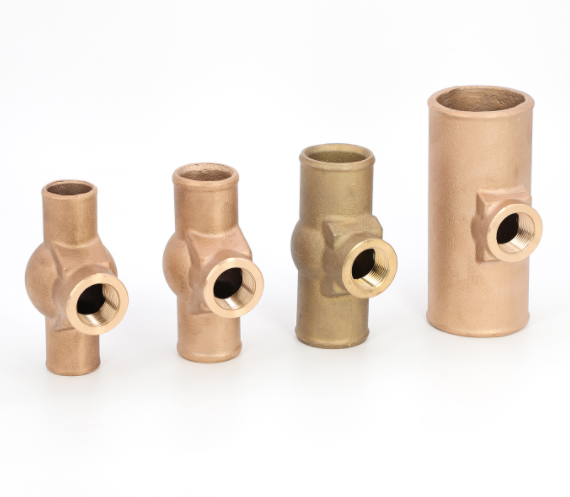Brass casting is a complex process that requires skill and expertise. Is brass good for casting and is it easy to cast? Let’s go over the process of brass casting.

Is Brass Good for Casting?
Yes, brass is a popular material for casting due to its properties such as its low melting point, good fluidity when melted, and high durability. Brass is an alloy made of copper and zinc, and it can also contain other elements such as lead, tin, or aluminum depending on the specific composition.
Brass casting is commonly used in the production of decorative items, plumbing fixtures, electrical components, and musical instruments, among other applications. The casting process involves melting the brass in a furnace and then pouring it into a mold to take the desired shape.
However, it’s important to note that brass casting can also have some challenges such as porosity, oxidation, and shrinkage. These can be mitigated by using proper casting techniques, including using the right temperature and cooling rate, as well as using quality molds and alloys.
Is Brass Easy to Cast?
Brass is generally considered to be easy to cast due to its low melting point, good fluidity when melted, and high durability. However, there are certain challenges associated with brass casting that can affect the quality of the final product if not managed properly.
One of the challenges of brass casting is porosity, which can cause the object to be weak or brittle. Porosity occurs when air bubbles are trapped in the brass during the casting process. This can be mitigated by using proper casting techniques, including using the right temperature and cooling rate, as well as using quality molds and alloys.
Another challenge is oxidation, which can cause the brass to corrode or form a layer of scale on the surface. This can be minimized by controlling the amount of oxygen present during the melting and pouring process.
Finally, brass casting can also be affected by shrinkage, which occurs when the metal cools and contracts after being poured into the mold. This can result in a loss of detail or distortion of the final product. To mitigate shrinkage, the casting process may involve the use of gating systems and risers to ensure that the molten brass fills the mold evenly and completely.
Overall, while brass is generally considered to be easy to cast, the quality of the final product depends on the skill and expertise of the caster, as well as the specific techniques and materials used during the casting process.
Process of Brass Casting
Brass casting is a process that involves pouring molten brass into a mold to create a solid object with a specific shape. The process typically involves the following steps:
– Pattern making: A pattern is the exact replica of the final object to be cast. The pattern is made of wood, plastic, or metal and is used to create mold. The pattern can be made by hand or with the help of computer-aided design (CAD) software and 3D printing technology.
– Mold making: The pattern is used to create a mold by packing sand, clay, or another material around the pattern. The mold can be a one-piece or a two-piece mold. In a one-piece mold, the pattern is removed after the mold is made, while in a two-piece mold, the pattern is left in the mold and the mold is split into two halves.
– Melting the brass: Brass is melted in a furnace until it reaches a temperature between 900-1000 degrees Celsius. The temperature can vary depending on the specific alloy being used.
– Pouring the brass: Once the brass has reached the correct temperature, it is poured into the mold. The brass is poured slowly and evenly to prevent air pockets from forming.
– Cooling and Finishing: After the brass has been poured into the mold, it is allowed to cool and solidify. The cooling process can take several hours or even days depending on the size of the object. Once the object has cooled, it is removed from the mold, cleaned up, and polished to give it the desired finish.

